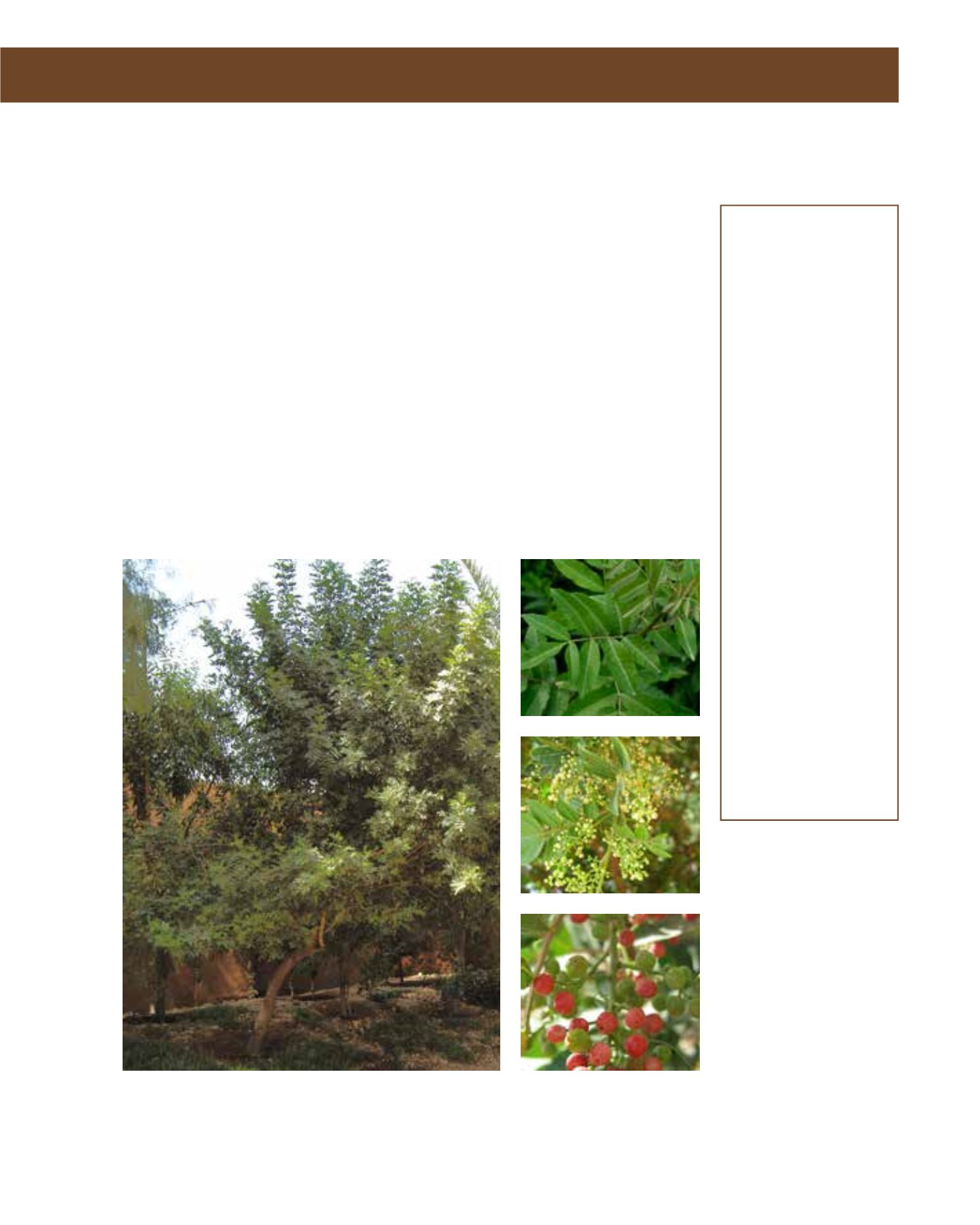

GENERAL
Origin
:
Mediterranean,
sub-tropical,
tropical
Vigour
:
normal growth
rate
Humidity
:
very humid,
extremely humid
Propagation :
sowing and
pricking out,
cuttings
Maintenance :
moderate
CONDITIONS
Urban climate :
resistant
Dessication :
vulnerable
Stagnant water :
vulnerable
Irrigation
:
high
Salinity/ppm :
high (4500 ppm)
Hardiness
:
0°C
SHAPE0
Type
:
tree
Height
:
5 m-9 m
Spread
:
7 m-10 m
Foliage
:
evergreen
FLOWER
Colour
:
white
Size
:
5 cm - 15 cm
Period
:
March - May
Smell
:
aroma,
moderate, leaf
FRUIT
Type of fruit :
drupe(fleshy/
juicy)
Fruit size
:
0.5 cm - 0.7 cm
Toxicity
:
edible when
processed, fruit,
root
Schinus terebinthifolius is the Brazilian Pepper Tree, and like its relative is also known in Arabic
as filfil-arid. It comes originally from Brazil. It prefers humid, tropical to Mediterranean climatic
zones, and is relatively successful in Arriyadh, probably more so than S. molle. The tree reaches
a height of 9 metres, with a similar width. It has an open, umbrella-shaped crown. The foliage is
evergreen. The leaves are alternate, imparipinnate, entire and lanceolate to ovate in shape. The
small white flowers appear in panicles; from these flowers, the tree develops the typical rose-
pepper fruits. Propagation can be done by sowing and cuttings. The Brazilian Pepper requires
full sun, but some humidity in Arriyadh, regular irrigation and has medium tolerance to salinity,
thriving on most soils with good drainage. It is, however, not absolutely hardy. It can withstand
temperatures down to 5°C, but is susceptible to cool, dry winds on the outskirts of Arriyadh. The
Brazilian Pepper is a good ornamental tree in frost-free regions, thanks to its lush green foliage
and fruits. In Arriyadh, sheltered locations should be selected for landscape planting. It can be
used in public open spaces, park planting and in pedestrian precincts. Maintenance is minimal:
consideration should be given to the possible litter from fruit drop, wind damage and the tree’s
invasive root system. With its dense foliage canopy, it can also be recommended as a shade tree
along pathways or as a small tree for a patio or garden and a slope stabiliser.
276
Schinus terebinthifolius,
Anacardiaceae
Brazilian Pepper Tree,
filfil arid
















